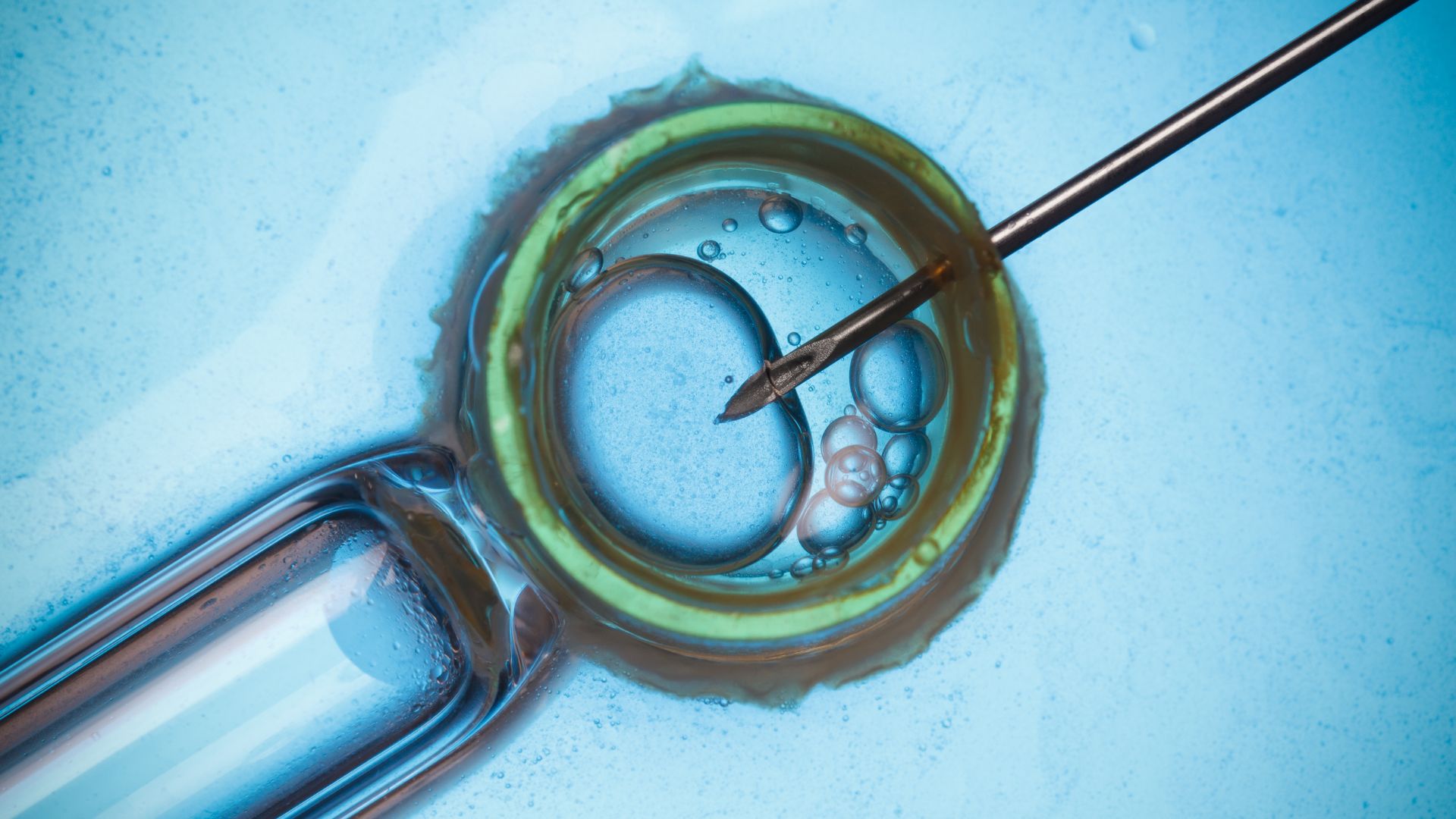
Male infertility often remains overshadowed despite its significant role in the challenges faced by countless couples striving for parenthood.
In India, male infertility is a contributing factor in approximately 15% of cases where couples experience difficulties conceiving. TESE, or Testicular Sperm Extraction, offers a beacon of hope, particularly for those diagnosed with conditions like azoospermia.
Key Takeaways
| Key Fact | Detail |
|---|---|
| Common Causes of Male Infertility | Hormonal imbalances, genetic conditions, lifestyle factors |
| Forms of Azoospermia | Obstructive (OA) and Non-Obstructive (NOA) |
| Solution Offered | TESE for sperm retrieval directly from the testes |
| Supportive Resources | IVF Support Groups in India |
Overview of Male Infertility in India
In our quest to navigate the complex landscape of fertility, it becomes crucial to understand the spectrum of factors that contribute to male infertility:
- Genetic predispositions and chromosomal anomalies contributing to azoospermia.
- Lifestyle influences, such as obesity and smoking, which directly impact sperm health.
- Medical treatments like chemotherapy, known to reduce fertility potential.
According to research from the National Institutes of Health, common causes of male infertility include but are not limited to hormonal imbalances, varicocele, and even specific medications.
These issues necessitate a specialized approach to treatment and recovery, tailored not only to alleviate physical symptoms but also to address the emotional journey accompanying infertility diagnoses and treatments.
TESE: A Solution for Azoospermia
Azoospermia, the absence of sperm in semen, affects a significant number of men with infertility. This condition is often a considerable barrier to natural conception and can manifest in two forms:
- Obstructive azoospermia (OA): The testes produce sperm, but due to blockages in the seminal pathways, sperm cannot be ejaculated.
- Non-obstructive azoospermia (NOA): A more challenging scenario where the testes do not produce adequate sperm.
TESE is a surgical procedure that directly retrieves sperm from the testicular tissue.
By bypassing ejaculatory blockages (in OA) or extracting sperm directly from the testes in cases of severely impaired or non-existent sperm production (in NOA), TESE enables men to tackle an essential hurdle in their path to fatherhood.
Male Infertility and IVF treatments like TESE paired with ICSI, a specialized form of IVF, are tailored to overcome significant reproductive challenges.
By integrating advanced reproductive technologies, specialized surgical procedures like TESE are changing the landscape of fertility treatments, offering hope and a path forward for many couples.
As we delve deeper into understanding when TESE is used and explore its variations, remember that each couple’s journey is unique.
The choice to pursue TESE should be made after thoughtful consultation with a fertility specialist who can provide personalized insights and guidance tailored to specific medical histories and fertility goals.
In the upcoming sections, we will further explore the usage scenarios for TESE and its various procedural nuances to offer a comprehensive understanding for couples considering this route.
Stay tuned as we continue to unfold the intricate tapestry of fertility treatments and their transformative potential in the lives of aspiring parents.
Continue Reading: Understanding When and Why TESE is Used
When is TESE Used?
Understanding when to employ Testicular Sperm Extraction (TESE) is crucial for achieving the best outcomes. Let’s discuss the conditions and scenarios in which TESE becomes the recommended approach.
Understanding Azoospermia: A Guide for Action
Azoospermia, or the absence of sperm in the semen, is one of the primary reasons for employing TESE.
This condition may stem from either obstructive issues (OA) where pathways are blocked, or non-obstructive issues (NOA), where sperm production is minimal or absent.
Each type requires a different strategic approach:
Non-Obstructive Azoospermia (NOA):
- The Primary Target for TESE: For men with NOA, TESE becomes a crucial option as it might be the only way to retrieve viable sperm directly from the testicles.
- Causes: These can range from genetic disorders like Klinefelter syndrome to effects from medical treatments such as chemotherapy.
- Actionable Step: It’s essential to discuss the underlying cause of your NOA with a specialized urologist or fertility specialist who can provide tailored advice and treatment options.
Obstructive Azoospermia (OA):
- Alternative Approaches First: In cases of OA, where there’s a blockage but normal sperm production, methods like sperm retrieval from the epididymis are considered initially.
- Utilizing TESE as a Backup: If other less invasive procedures are unsuccessful in retrieving sperm, TESE stands as the next viable option to consider.
Use Prior to Vasectomy Reversal:
- Proactive Planning: For those considering reversing a vasectomy, discussing the extraction and banking of sperm using TESE can offer an alternative in scenarios where reversal success is uncertain.
- Benefits Post-reversal: Storing sperm via TESE provides an additional layer of security for future reproductive plans, ensuring that viable sperm are available if the reversal does not yield the desired results or if natural conception proves challenging.
Additional Considerations:
- Severity of Azoospermia: The success rate of TESE significantly depends on the severity and type of azoospermia. Early and thorough evaluation increases the chances of successful sperm retrieval.
- Importance of Genetic Counseling: For known genetic issues affecting fertility, engaging with a genetic counselor can provide critical insights into potential inheritable conditions, aiding in informed family planning decisions.
Practical Advice: Always ensure that you’re receiving personalized care; discuss all available treatment options to understand their benefits and limitations fully.
Knowledgeable decision-making is instrumental in navigating the complexities of male infertility.
Explore TESE Variations: Conventional vs. Micro-TESE
Variations of TESE: Understanding Your Options
When exploring Testicular Sperm Extraction (TESE), it’s crucial to understand the variations of the procedure—mainly, Conventional TESE and Micro-TESE.
Each has its advantages and specific scenarios where one might be preferred over the other.
Conventional TESE:
- Traditional Approach: This technique involves the extraction of small tissue samples from the testes through small incisions. It typically does not rely on magnification tools, relying more on the surgeon’s judgment.
- Success Rates: While effective, the success rates can vary widely, generally ranging from 30-50% depending on the underlying cause of azoospermia and the surgeon’s expertise.
- Considerations: Conventional TESE can potentially be more invasive with a risk of damaging surrounding testicular tissue, which might affect future attempts or overall testicular function.
Micro-TESE:
Technological Advancement: A refinement of the conventional approach, micro-TESE employs a powerful surgical microscope to enhance the visibility of sperm-producing tubules, improving precision and outcomes.
Benefits:
- Greater Precision: The use of magnification allows for selective tissue removal, reducing the overall impact on testicular health.
- Potentially Higher Success Rates: Studies have indicated improved retrieval rates especially in men with non-obstructive azoospermia, making it a preferred choice in such cases.
- Considerations: Though micro-TESE might be more expensive due to the specialized equipment and expertise required, its potential for higher sperm retrieval rates and reduced tissue damage often justifies the cost.
Choosing Between Conventional TESE and Micro-TESE:
- Expertise and Experience: The choice often depends on the surgeon’s skill and familiarity with the procedures. It’s crucial to select a clinic where the surgeons have substantial experience, particularly with micro-TESE.
- Individual Case Factors: Factors such as the type of azoospermia, previous surgeries, and overall testicular health should guide the decision-making process.
- Discussing Options: Always consult with your fertility specialist to understand the best possible option for your specific scenario. Educated decisions stemming from thorough consultations lead to better outcomes.
Additional Considerations:
- Availability: Not all centers may offer micro-TESE due to the need for specialized equipment and trained personnel.
- Recovery and Aftercare: Discuss the post-procedure care and any potential impact on your general health and future fertility.
Understanding TESE Success Rates with IVF/ICSI
TESE Success Rates with IVF/ICSI: Balancing Expectations with Hope
When considering TESE as part of your journey towards parenthood, understanding the success rates associated with this procedure, especially when combined with IVF/ICSI, is crucial.
Success in TESE is gauged by two primary metrics: the sperm retrieval rate and the subsequent pregnancy rate through IVF/ICSI.
Understanding Success:
- Sperm Retrieval Rate: This is the percentage of TESE procedures where viable sperm are successfully retrieved from the testes. It is the first critical hurdle in the journey towards conception.
- Pregnancy Rate: This measures the number of successful pregnancies achieved using sperm extracted via TESE and fertilized through ICSI.
Factors Affecting Success Rates:
- Type and Severity of Azoospermia: Men with obstructive azoospermia (OA) generally have higher sperm retrieval rates compared to those with non-obstructive azoospermia (NOA) due to the presence of normal sperm production.
- Surgical Expertise: The skill level of the surgeon performing micro-TESE can significantly influence the retrieval rates. Advanced techniques and experience play a vital role.
- Embryology Lab Quality: The capabilities of the IVF lab, including the technology and expertise of embryologists, can affect the ultimate success of embryo development and implantation.
- Female Partner’s Fertility Health: Factors such as the age and reproductive health of the female partner also crucially impact the success rate of IVF/ICSI.
Navigating Success Rates:
While the retrieval rates for micro-TESE can range from 40-60% or higher, depending on the intricacies of the individual case, pregnancy rates can vary more widely.
It’s essential to have a detailed discussion with your fertility clinic about their specific success rates and how they might relate to your situation.
This conversation can help set realistic expectations and inform your decision-making process.
Actionable Steps:
- Research and Consultation: Prior to deciding on TESE, research potential clinics and their success rates. Consult with multiple specialists if possible to find the best fit for your needs.
- Comprehensive Evaluation: Ensure both partners undergo a thorough fertility assessment to identify any additional factors that may affect the treatment outcome.
- Preparation and Support: Engage with support resources such as IVF support groups in India and explore counseling options to strengthen your mental and emotional readiness.
Find the Right TESE Specialist in India
Finding the Right TESE Specialist in India: Building Your Care Team
Selecting an experienced and skilled TESE specialist is paramount to maximizing your chances of a successful outcome.
This choice can significantly impact both the retrieval of viable sperm and the overall IVF/ICSI success rates. Here’s how you can navigate the process of finding the right doctor and clinic for TESE in India.
Importance of Experience:
- TESE, particularly micro-TESE, requires refined surgical skills. The expertise of your surgeon plays a critical role in maximizing the probability of sperm retrieval, especially in complex cases like NOA.
Where to Search:
- Reputable Fertility Clinics and Hospitals: Begin by researching established fertility centers that are known for their specialization in male infertility. Many of these institutions offer a team approach, which includes urologists, reproductive endocrinologists, and specialized nurses.
- Doctor Recommendation Platforms: Websites that offer patient reviews and doctor ratings can provide insights into the experiences of other patients, helping you gauge the reliability and success rates of potential specialists.
- Personal Recommendations: Referrals from your primary care physician or urologist can also be valuable. If you know other individuals who have gone through similar fertility treatments, ask them about their experiences.
Actionable Steps:
- Create a Shortlist: Research potential specialists and clinics. Look at their credentials, experience, and the technologies they employ (such as micro-TESE capabilities).
- Schedule Consultations: Make appointments to meet with the doctors on your list. Prepare a set of questions to ask about their experience with TESE, success rates, and their approach to treatment.
- Visit the Facilities: If possible, visit the clinic to get a sense of the environment and how operations are managed. Comfort and confidence in the setting can be crucial for your emotional well-being during treatment.
Questions to Ask During Consultation:
- What is your experience with TESE, specifically micro-TESE?
- Can you provide statistics on sperm retrieval and pregnancy rates related to TESE procedures performed here?
- How do you handle cases similar to mine?
- What support services do you offer, such as counseling for coping with IVF?
Additional Considerations:
- Cost and Insurance: Understanding the financial aspect of TESE is crucial. Ask about the detailed costs, payment options, and whether any aspect of the procedure might be covered by insurance. Financial planning for IVF can be complex, so clarity on expenses upfront can prevent unexpected challenges.
- Accessibility and Convenience: Consider the location of the clinic. Regular visits might be necessary, so accessibility can play a significant role in reducing treatment-induced stress.
Understanding the TESE Procedure and Aftercare
The TESE Procedure and Aftercare: What to Expect
Undergoing the TESE procedure can be a significant step towards resolving male infertility issues.
Understanding what the procedure entails and what aftercare involves can help alleviate anxiety and prepare you for a smooth experience and recovery.
Pre-Procedure Preparations:
- Consultations and Testing: Before scheduling TESE, extensive consultations with your fertility specialist and urologist are required. Expect to undergo a series of diagnostic tests, including hormonal profiles and genetic testing, to confirm the diagnosis of azoospermia.
- Informed Consent: It’s essential to thoroughly understand the risks, benefits, and potential complications associated with TESE. Your specialist should provide a detailed consent form explaining all aspects of the procedure.
Day of Surgery:
- Outpatient Procedure: TESE is generally performed as an outpatient procedure, meaning you can go home the same day.
- Anesthesia: The procedure is usually done under local anesthesia with sedation, though general anesthesia may be used in some cases.
- Procedure Details: The surgeon will make a small incision in the scrotum to access the testicles and extract small tissue samples. The use of a microscope in micro-TESE allows for more precise extraction with minimal tissue damage.
- Duration: The surgery typically lasts between 30 to 60 minutes, depending on the complexity of the case.
Post-Procedure Care:
- Immediate Aftercare: Post-surgery, you’ll spend a few hours in recovery as the anesthesia wears off. Minor pain and swelling are common, but pain relief will be provided.
- Recovery at Home: Most men can resume light activities within a few days but should avoid any strenuous physical activity for a couple of weeks to allow the surgical site to heal properly.
- Follow-Up Appointments: Follow-up visits are crucial to monitor the healing process and discuss the results of the sperm extraction.
Actionable Steps:
- Arrange for Transportation: You will need someone to drive you home after the procedure due to the effects of anesthesia.
- Prepare Your Home for Recovery: Set up a comfortable resting area at home. Stock up on essentials so that movement around the house can be minimized during the first few days of recovery.
- Post-Operative Care Instructions: Follow all care instructions provided by your surgeon. This includes managing pain, caring for the incision site, and recognizing signs of possible complications.
Long-Term Considerations:
- Sperm Extraction Outcome: If viable sperm are retrieved, they can either be used immediately in an IVF/ICSI cycle or frozen for future use.
- Emotional and Psychological Support: The emotional impact of undergoing fertility treatments can be significant. Engaging with IVF support groups and considering counseling can be beneficial.
Explore Emotional and Financial Considerations
Emotional and Financial Considerations: A Holistic Approach to TESE
Embarking on a TESE journey isn’t just a medical decision; it’s a deeply personal one that impacts emotional well-being and financial stability.
Understanding these aspects is crucial for a balanced approach to fertility treatments.
Emotional Considerations:
- Psychological Impact: Infertility and the associated treatments can be stressful and emotionally taxing. The uncertainty and invasive nature of procedures like TESE can add to the emotional burden.
- Support Systems: It is vital to have robust support systems in place. Engaging with IVF support groups in India can provide comfort and a sense of community. Many find it helpful to speak with others who are going through similar experiences.
- Counseling and Therapy: Professional counselors specializing in fertility issues can offer invaluable support, helping you and your partner manage stress, communicate effectively, and navigate the emotional highs and lows of infertility treatments.
Financial Considerations:
- Cost of Procedures: TESE, coupled with IVF/ICSI, can be costly. The expenses can include not just the procedures themselves but also pre-and post-operative care, medication, and potential multiple cycles.
- Insurance and Financial Aid: It’s important to review your health insurance policy to understand what aspects of the treatment are covered. In India, the coverage for fertility treatments can vary greatly. Some couples might need to explore alternative financial options such as loans or fertility grants.
- Budgeting and Planning: Having a clear financial plan can help alleviate some of the stress associated with treatment costs. Consider speaking with a financial advisor who has experience in healthcare costs to help budget and explore financing options.
Actionable Steps:
- Open Communication: Honest conversations about emotional and financial considerations are crucial. Keep lines of communication open with your partner, healthcare provider, and support network.
- Explore Resources: Look into additional resources such as the Indian Society for Assisted Reproduction for guidance and support on navigating infertility treatments in India.
- Prepare Financially: Utilize resources that help with understanding and mitigating the financial burden of IVF, including potential tax deductions, financing plans offered by clinics, or fertility-specific financial services.
Final Thoughts
Embarking on a TESE journey is a substantial commitment, and while it’s fraught with challenges, the advancements in reproductive technologies and surgical techniques have made it a viable option for many couples.
In India, the availability of qualified specialists and state-of-the-art clinics continues to grow, providing access to these essential services.
Moving Forward with Confidence
- Stay Informed and Proactive: Continue to educate yourself about new developments in TESE and IVF/ICSI technologies. Being informed will help you make better decisions and discuss your options more productively with your healthcare providers.
- Maintain Open Communication: With your partner, doctors, and support networks. This journey can be arduous, and having a good support system can make a significant difference.
- Foster Resilience and Hope: Every couple’s journey is unique. Stay resilient, and maintain hope as you navigate this path.
By taking a comprehensive, informed, and sensitive approach to TESE, you can enhance your chances of success and make the process as smooth and manageable as possible.






